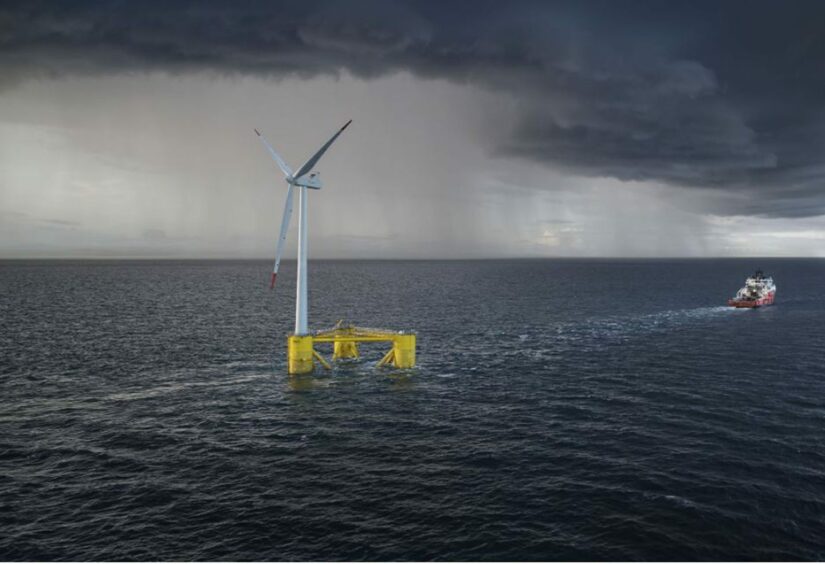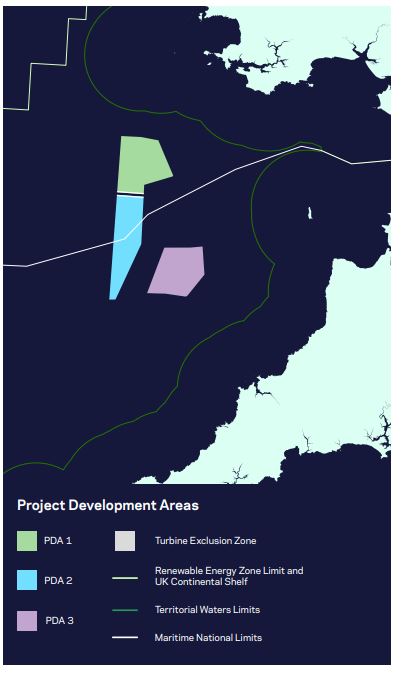
The Crown Estate has kicked off a brand new tender process for its upcoming fifth wind leasing round, which promises three new floating projects in the Celtic Sea.
Round 5 follows four previous leasing rounds held by the seabed manager and is expected to represent the first phase of commercial wind development in the region off the coast of South Wales and southwest England.
Notably, the process for procurement represents a significant evolution from previous rounds, abandoning sealed bids and introducing new obligations for developers to invest in skills and local infrastructure.
First announced in 2021, the programme was initially intended to establish 4GW of floating capacity by 2035, though the agency said the area could accommodate up to an additional 20GW by 2045.
After some revisions this year the round will now cover three project development areas (PDAs) of roughly equal size, upping the overall capacity available to a potential 4.5GW.
Moreover, no bidder will be able to secure a lease agreement for more than one area – potentially widening the playing field.
An Information Memorandum published on Thursday includes details of a series of contractual commitments for developers aimed at creating social and environmental impacts, focused on skills and training, tackling inequalities in employment, environmental benefits and working with local communities.
Bidders will also be required to demonstrate commitments for the timely access to the port infrastructure needed to successfully develop their projects.
New research, due to be published in the new year, will also provide a view on how best to maximise the economic and social benefits arising from Round 5 and the longer-term sustainable development of the offshore wind industry.
However, estimates included in the memorandum suggest the round could generate around 4,000 permanent jobs and up to £19bn total investment, representing around £300m in UK economic activity per year.
Intelligent design
For the first time, offshore spatial design will be accompanied by a matching set of design recommendations for the electricity grid to enable power offtake, helping to de-risk offshore project design and delivery.
Alternative export options for hydrogen may also be provided through a pipeline agreement.
Developers will be allowed to deliver the three PDAs in up to three projects or phases of at least 300MW, to align with corporate risk appetites and the availability of the supply chain.
Financial risks have also been lessened through the offer of a possible 50% reduction in option fees per year if project consenting causes undue delays to development.
According to an indicative timeline, the round will officially open to prequalification submissions in late February 2024, with a bidding window in late Q1 2025. This would culminate in successful bidders signing agreements for leases in Autumn 2025.
Crown Estate chief executive Dan Labbad said the launch was “the culmination of years of engagement across governments, environmental bodies, industry and other stakeholders.
“As the collaboration and partnerships that have brought us this far continue, this opportunity stands to be a game-changer for business and communities associated with these projects, as we realise the full potential of floating wind in the Celtic Sea and beyond.”
Minister of State for Energy Security and Net Zero Graham Stuart said: “Floating offshore wind is a huge opportunity for Wales and the South West, with the potential to deliver billions of pounds of direct investment whilst bolstering our energy independence and net zero ambitions.
“Today’s plans will build on the Government’s ambition to deploy up to 5GW of floating offshore wind by 2030. Together with The Crown Estate I look forward to bringing more capacity online, through our plans to see up to 16GW deployed in the Celtic Sea through the 2030s.”
Recommended for you

 © Crown Estate
© Crown Estate